Preparing for bushfire season
Managing livestock after a bushfire can be challenging and stressful. Animals may be dead or injured, access to feed may be reduced, and fences and other infrastructure may be damaged.
To assist producers in meeting the requirements of Australia’s red meat integrity system in the event of a bushfire, Integrity Systems Company (ISC) provides the following guidelines:
Planning for adversity
As part of on-farm biosecurity plans, producers should ensure they have a disaster management plan in place. This may include:
- Evacuation plans for people and livestock – including locations of where stock can be moved to in the event of a fire
- Plans for the purchase and storage of emergency fodder
- Plans for the provision of water if infrastructure is destroyed by fire
- List of emergency contact details including the fire brigade, local council, state department of primary industry, local vet, emergency animal disease hotline.
- Proactive management to ensure livestock are effectively identified and that stock transfers, stock registers and livestock vaccinations are up to date.
Emergency fodder
Provision of adequate food and water is often the first requirement following a bushfire.
While state/territory agencies and state farming organisations may coordinate emergency fodder drops following natural disasters, the welfare of livestock remains the responsibility of the livestock owner.
Producers should be careful when sourcing emergency fodder. It’s important to be mindful of the risks associated with purchasing from unfamiliar suppliers, including weed seed, restricted animal material and poor quality or unsuitable feed for particular classes of livestock. Where possible, this fodder should be accompanied by a Commodity Vendor Declaration (CVD) and records of all purchased feed should be kept.
Longer term strategies may include the removal of livestock to another location where adequate food and water can be provided, such as an agistment paddock, stock route or feedlot, or the sale of livestock.
Animal treatment and humane destruction
Producers should also ensure appropriate treatment for sick, injured or diseased animals is provided at the first reasonable opportunity.
Providing appropriate veterinary care for livestock following a bushfire may be difficult. For guidance, producers should access the Dealing with natural disasters page on the MLA website.
When humane destruction is necessary, it is important that appropriate methods are used by people who have the relevant experience, knowledge, skills and tools outlined in the Australian Animal Welfare Standards.
Carcase disposal methods include burial, burning and composting. Producers should take care when handling carcases, ensuring they use personal protective equipment (PPE) including a mask if there may be a risk of contracting Q Fever. For advice on appropriate carcase disposal methods and specific health risks in your area, producers can check with their local and state authorities.
Regular monitoring of livestock is recommended following a bushfire. Where possible, restrict unnecessary activity or handling while livestock are recovering to minimise stress. Animals that have been through a natural disaster are susceptible to parasite attack, so managing ticks, flies, lice, worms and nuisance insects is also important.
If there have been changes to your paddocks and facilities, such as the burning of fences, a check of what your livestock can access is necessary.
Agistment
While agistment can provide welcome relief following bushfire, offering feed or safety, all livestock movements, especially after a natural disaster pose an added biosecurity risk.
When agisting stock, producers should ensure they:
- Inspect the property or send a trusted representative, such as a stock agent
- If you are an LPA accredited producer, make enquiries to ensure you know about any contaminated sites or potential chemical exposure on the property
- Prepare a written agreement between the agister (owner of the stock) and the landowner, outlining roles and responsibilities
- Have a biosecurity plan that includes isolation of livestock which has been moved onto a property
- Complete an LPA NVD for stock movements between PICs and record the movement details on the NLIS database.
Download this fact sheet from ISC on managing livestock and meeting integrity program requirements during bushfire season.



